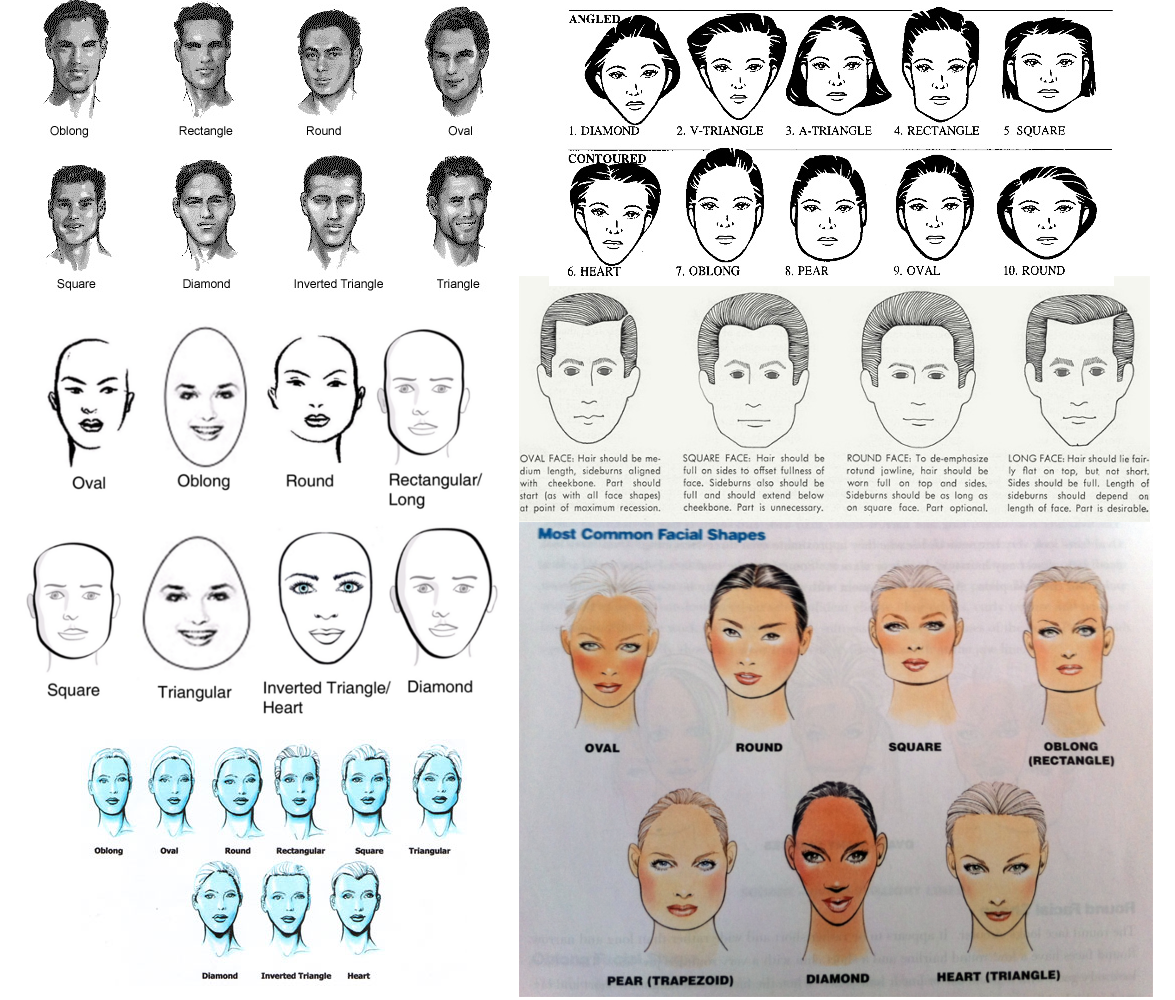When it comes to beauty and aesthetics, the shape of our face plays a significant role in determining our overall appearance. Understanding the various facial shapes can help you choose the right hairstyle, makeup, and even eyewear that complements your features. In this article, we will explore the different facial shapes, how to identify yours, and tips for enhancing your natural beauty based on your face shape.
Facial shapes are categorized into several distinct types, each characterized by specific proportions and features. Recognizing these shapes can empower individuals to make informed decisions about their beauty routines and personal styling. Join us as we dive deep into the world of facial shapes and discover how they influence our perception of beauty.
Whether you are looking for a new hairstyle or simply want to understand more about your facial structure, this comprehensive guide will provide you with valuable insights. Let’s begin our exploration of how many facial shapes there are and what each one entails.
Table of Contents
- What Are Facial Shapes?
- The 8 Main Facial Shapes
- How to Determine Your Facial Shape
- Enhancing Your Features Based on Your Facial Shape
- Hairstyles for Each Facial Shape
- Makeup Tips for Different Facial Shapes
- Common Myths About Facial Shapes
- Conclusion
What Are Facial Shapes?
Facial shapes refer to the outline and structure of an individual's face. They are primarily defined by the relationship between different facial features, such as the forehead, cheekbones, jawline, and chin. Understanding facial shapes is crucial not only in the field of beauty and fashion but also in areas like medicine, where facial symmetry can indicate health and genetic traits.
The 8 Main Facial Shapes
There are eight primary facial shapes, each with its unique characteristics:
- Oval: The oval face is considered the ideal shape due to its balanced proportions. The forehead is slightly wider than the chin, and the cheekbones are prominent.
- Round: A round face has soft curves with a forehead and jawline that are about the same width. The cheeks are often fuller, giving a youthful appearance.
- Square: Square faces feature a strong jawline, with the forehead and jaw being of equal width. The cheekbones are prominent, creating a strong, angular appearance.
- Rectangular: The rectangular face is longer than it is wide, with a square jaw and forehead. This shape often has prominent cheekbones.
- Heart: Heart-shaped faces have a wider forehead and cheekbones, tapering down to a narrow chin. This shape resembles an upside-down triangle.
- Diamond: A diamond-shaped face has prominent cheekbones, a narrow forehead, and a pointed chin. This shape is often considered exotic and striking.
- Triangle: Triangle faces are characterized by a narrow forehead and wider jawline. This shape often gives a more masculine appearance.
- Oblong: Oblong faces are longer than they are wide, with a long chin and forehead. This shape can appear very elegant.
How to Determine Your Facial Shape
Identifying your facial shape is relatively simple. Here are steps to help you determine your face shape:
- **Measure Your Forehead:** Use a tape measure to find the width of your forehead at its widest point.
- **Measure Your Cheekbones:** Find the width of your cheekbones by measuring from one cheekbone to the other at their widest point.
- **Measure Your Jawline:** Measure the width of your jawline at its widest point.
- **Measure Your Face Length:** Measure from the center of your hairline to the tip of your chin.
Once you have these measurements, compare them to the characteristics of the eight facial shapes mentioned earlier to determine which one you resemble the most.
Enhancing Your Features Based on Your Facial Shape
Understanding your facial shape allows you to enhance your features effectively. Here are some tips:
- Oval: Almost any hairstyle or makeup look works well with an oval face.
- Round: Opt for hairstyles that add height and elongate the face. Contouring can also help define the cheeks.
- Square: Soften angular features with layered hairstyles and rounded makeup techniques.
- Rectangular: Choose hairstyles that add width, and use contouring to soften the jawline.
- Heart: Look for hairstyles that balance the forehead and chin, such as side-swept bangs.
- Diamond: Use hairstyles that add width at the forehead and chin, and opt for soft makeup.
- Triangle: Choose hairstyles that add volume to the top of the head, and contour to soften the jawline.
- Oblong: Opt for hairstyles that add width, and avoid long, straight styles that elongate the face.
Hairstyles for Each Facial Shape
Choosing the right hairstyle can significantly enhance your appearance. Here are some recommended hairstyles for each facial shape:
Oval Face
- Soft waves
- Long layers
- Side-swept bangs
Round Face
- Long layered cuts
- High ponytails
- Angular bob
Square Face
- Textured bob
- Long, soft layers
- Side-parted styles
Rectangular Face
- Soft, wavy hairstyles
- Shoulder-length cuts
- Soft curls
Heart Face
- Chin-length bob
- Side-swept bangs
- Long layers
Diamond Face
- Side-bangs
- Textured hairstyles
- Long, soft layers
Triangle Face
- Layered hairstyles
- Volume at the crown
- Soft curls
Oblong Face
- Volume on the sides
- Wavy styles
- Bangs
Makeup Tips for Different Facial Shapes
Makeup can also be tailored to enhance your facial shape:
Oval Face
- Balanced makeup on all features.
Round Face
- Contouring on the sides of the face to elongate it.
Square Face
- Softening the jawline with contouring.
Rectangular Face
- Contouring the sides and blushing on the apples of the cheeks.
Heart Face
- Soft makeup on the forehead and eyes.
Diamond Face
- Highlighting the cheekbones and softening the forehead.


